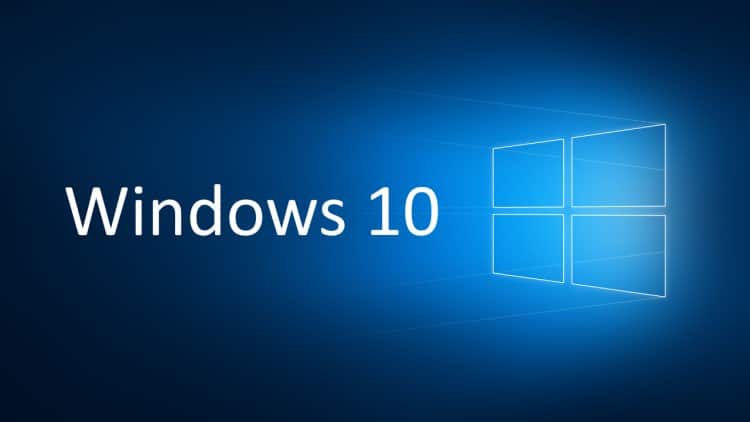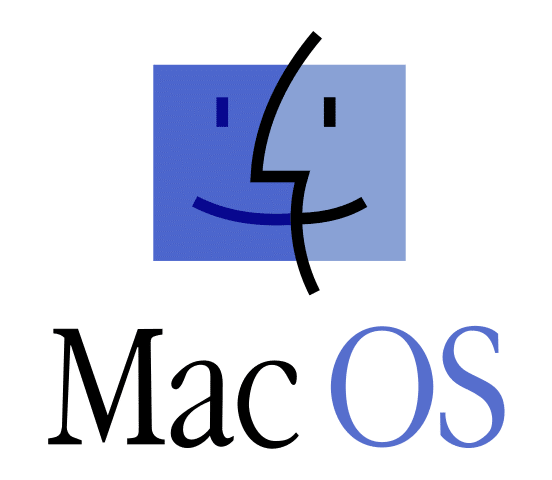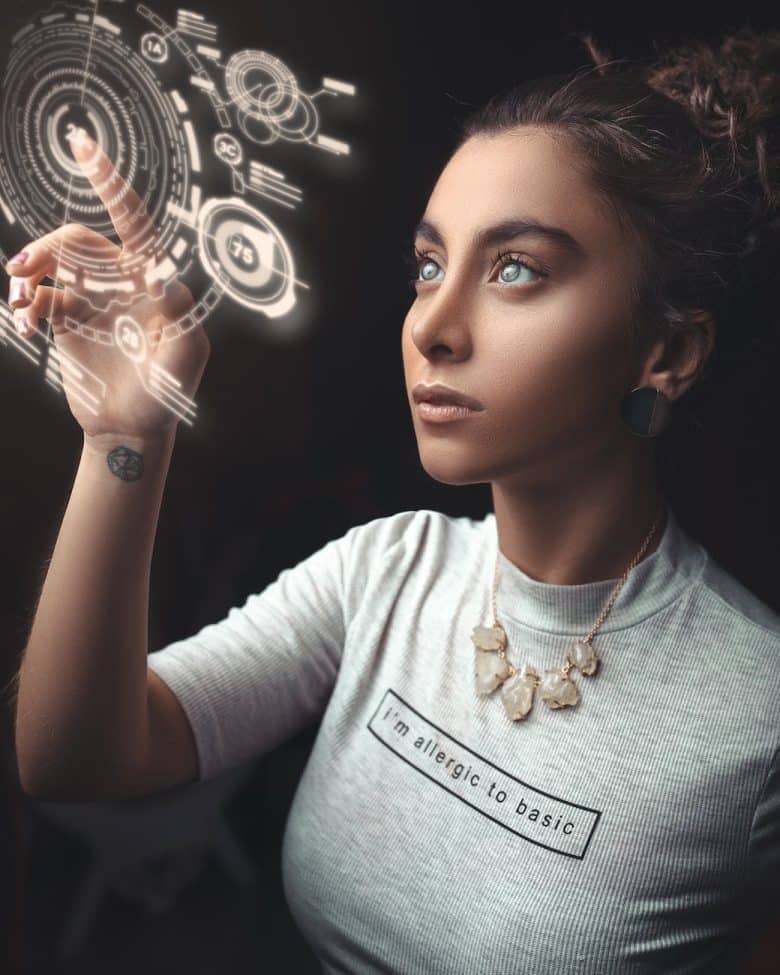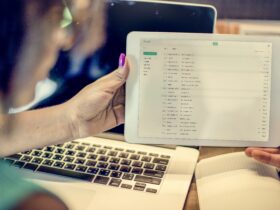An operating system, or OS, is the software that manages all of the hardware and software resources of a computer. It is the foundation on which all of the other programs on a computer run, and it plays a crucial role in how a computer functions. There are a couple of different operating system types and versions, including Microsoft Windows, macOS, Linux, and Chrome OS. Each of these operating systems has its own unique features and capabilities, and they are used for different purposes.
In this post, we’ll take a closer look at general operating system functions, as well as dive into each of these operating systems. We’ll discuss the pros and cons of each and how to decide which one might be the best choice for you. So, stay tuned to learn more about computer operating systems and how they compare to each other.
Operating System Functions
An operating system (OS) is a collection of software that manages the hardware and software resources of a computer. The main functions of an operating system include:
Resource management: The operating system is responsible for allocating and managing the hardware and software resources of the computer, such as the processor, memory, and storage. It ensures that these resources are used efficiently and are available to the applications and users that need them.
Memory management: The operating system manages the computer’s memory, which is used to store data and instructions while they are being processed. It ensures that the memory is used efficiently and that the different programs and processes running on the computer have sufficient memory to run smoothly.
Process management: The operating system is responsible for managing the processes that are running on the computer. It creates, schedules, and terminates processes as needed, and it ensures that each process gets a fair share of the computer’s resources.
Input/output (I/O) management: The operating system manages the input and output devices of the computer, such as the keyboard, mouse, and display. It handles the communication between these devices and the rest of the system, and it ensures that data is transferred between them efficiently.
File management: The operating system is responsible for managing the files on the computer, including creating, deleting, and organizing files and directories. It also controls access to these files and determines who can read, write, and execute them.
Overview of Major Operating Systems
Several major operating systems are commonly used on personal computers (PCs). The operating system list includes these major entries:
Microsoft Windows: This is the most widely used operating system for PCs. There are several versions of Windows available, including Windows 10, Windows 8, and Windows 7.
macOS: This is the operating system that is used on Apple’s Mac computers. It is known for its ease of use and its integration with other Apple products and services.
Linux: This is a free and open-source operating system that is commonly used on PCs, particularly by developers and other tech-savvy users. There are many different distributions (versions) of Linux, including Ubuntu, Debian, and Fedora.
Chrome OS: This is a lightweight operating system developed by Google that is primarily used on Chromebooks. It is designed to be fast and easy to use, and it relies heavily on cloud-based apps and services.
Microsoft Windows

Microsoft Windows is the most widely used operating system for personal computers (PCs). It is known for its wide range of features and compatibility with a wide range of hardware and software. Three versions of Windows are commonly in use – Windows 7, Windows 8, and Windows 10. Some computers certainly may have an older version of Windows than these three, but these are the version in use on most PCs. Let’s look at the three versions first before comparing the pros and cons of the Windows OS in general.
Here are some key differences between these three versions:
User interface: Windows 7 and Windows 10 have a similar user interface, with a Start menu and a taskbar at the bottom of the screen. Windows 8, on the other hand, introduced a new interface called the “Start screen,” which was designed for touch screens and consisted of a series of tiles that represented apps.
Features: Windows 10 includes several features that are not available in earlier versions of Windows, including virtual desktops, the Microsoft Edge web browser, and the Cortana digital assistant. Windows 8 introduced support for apps that could be downloaded from the Windows Store and run in a full-screen mode, as well as improved support for touchscreen devices. Windows 7 is a more traditional version of Windows and does not include these more modern features.
Performance: In general, Windows 10 is the most modern and powerful version of Windows and should offer the best performance on most PCs. Windows 8 and Windows 7 may be slower on newer hardware, particularly on devices with high-resolution displays.
Support: Microsoft ended mainstream support for Windows 7 in 2015 and ended extended support in 2020. This means that while Windows 7 will continue to work, it will no longer receive updates or security patches from Microsoft. Windows 8.1 will continue to receive updates until 2023, while Windows 10 will receive updates indefinitely.
Now that we’ve examined the main versions of Windows being used today, we can talk about the pros and cons of the Windows operating system in general. Here are some of the key pros and cons of using Windows as your operating system:
Pros:
Wide compatibility: Windows is compatible with a wide range of hardware and software, which makes it easy to find compatible devices and applications.
User-friendly interface: Windows has a user-friendly interface that is easy to navigate, with a Start menu and a taskbar at the bottom of the screen.
Wide range of features: Windows includes a wide range of features, such as support for virtual desktops, the Microsoft Edge web browser, and the Cortana digital assistant.
Widely used: Windows is the most widely used operating system, which means that there is a large community of users and developers who create a wide range of applications and provide support.
Cons:
Cost: Windows requires a licensing fee, which can be expensive for users who want to install it on multiple devices.
Vulnerability to malware: Windows is more vulnerable to malware and viruses than some other operating systems, which can be a concern for users who are concerned about security.
Performance issues: Some users have reported that Windows can be slow or unresponsive, particularly on older hardware.
Forced updates: Windows includes a feature called “Windows Update” that automatically downloads and installs updates to the operating system. While this can be convenient, it can also cause disruptions if an update causes problems on a user’s computer.
Overall, Windows is a good choice for users who are looking for a widely compatible operating system with a wide range of features and a user-friendly interface. However, it may not be the best choice for users who are looking for a more affordable option or who are concerned about security or performance.
Mac OS

macOS is the operating system used on Apple’s Mac computers. It is known for its integration with other Apple products, its user-friendly interface, and its security features. Because it is designed for use on Apple computers, this OS is rarely installed on a PC. It can be done with an emulator, but the performance of this OS is optimized when on an Apple computer. Here are some of the key pros and cons of using macOS as your operating system:
Pros:
User experience: macOS is known for its ease of use and intuitive user interface, which makes it simple for users to navigate and perform tasks. It also includes many features, such as the Dock and the Spotlight search tool, that make it easier for users to access their apps and files.
Integration with other Apple products: macOS is tightly integrated with other Apple products and services, such as the iPhone and iCloud, which makes it easy for users to access and sync their data across multiple devices.
Security: macOS includes several security features, such as the Gatekeeper tool, which helps to protect users from malware and other threats.
Performance: Mac computers are known for their performance, and macOS is optimized to run smoothly on Apple hardware.
Cons:
Cost: Mac computers are generally more expensive than PCs with similar specifications.
Limited compatibility: macOS is only compatible with Mac computers, which means that users are limited to the hardware and software that is available for the platform.
Fewer games: There are fewer games available for macOS compared to Windows, which can be a drawback for gamers.
Aesthetics: Some users may not like the design and aesthetics of Mac computers and the macOS operating system.
macOS is a good choice for users who value a user-friendly interface, integration with other Apple products, security, and performance. However, it may not be the right choice for those looking for a more affordable option or who need compatibility with a wide range of hardware and software.
Linux

Linux is a free and open-source operating system that was developed in the early 1990s. It is based on the Unix operating system, which was developed in the 1970s. Linux is known for its stability, security, and flexibility, which has made it popular for use in a wide range of applications, including servers, smartphones, and desktop computers.
Linux is less well-known than Windows or macOS, so let’s cover some other information before talking about pros and cons.
One of the key features of Linux is that it is open source, which means that the source code is available for anyone to view, modify, and distribute. This has led to the development of a large and active community of developers and users who contribute to the development of the operating system and create a wide range of applications for it.
Linux is also known for its security, as it is less vulnerable to malware and viruses than other operating systems. It is also highly customizable, with a wide range of “distributions” (versions) available that offer different features and user interfaces. Some popular distributions of Linux include Ubuntu, Fedora, and Debian.
Linux can be used on a wide range of devices, including desktop computers, laptops, servers, and smartphones. It is also often used as the operating system for “embedded” devices, such as routers and smart TVs.
Everyday applications for Linux:
Productivity software: Linux has a number of office productivity applications available, including LibreOffice (a free and open-source alternative to Microsoft Office) and OpenOffice (a similar suite of productivity tools).
Web browsers: Linux has a number of web browsers available, including Google Chrome, Mozilla Firefox, and Safari.
Graphics and design tools: Linux has a number of applications available for graphics and design, including GIMP (a free and open-source alternative to Adobe Photoshop) and Inkscape (a vector graphics editor).
Multimedia tools: Linux has a number of applications available for playing and editing audio and video, including VLC Media Player and Audacity (a digital audio editor).
Games: Linux has a growing number of games available, including a number of open-source and independent games, as well as many games that have been ported from other platforms.
Other applications: Linux has a wide range of other applications available, including email clients, chat clients, and financial management software.
But like any operating system, Linux has its own set of pros and cons. Here are some of the pros and cons of using Linux as your operating system:
Pros:
Cost: One of the main advantages of Linux is that it is free to download and use. This makes it an attractive option for users who are looking for a cost-effective operating system.
Security: Linux is known for its security features, which make it less vulnerable to malware and viruses than other operating systems. This can be particularly important for users who are concerned about protecting their data and devices from cyber threats.
Customization: Linux is highly customizable, with a wide range of “distributions” (versions) available that offer different features and user interfaces. This allows users to choose the version of Linux that best meets their needs and preferences.
Compatibility: Linux is compatible with a wide range of hardware, including older devices that may not be supported by newer versions of Windows.
Development: Linux is often used by developers due to its open-source nature and the availability of a wide range of tools and applications for programming.
Cons:
Limited support: Since Linux is an open-source operating system, it does not have the same level of support as proprietary systems like Windows or macOS. This can be an issue for users who are not experienced with using Linux and need help with troubleshooting or other issues.
Limited compatibility with proprietary software: Some proprietary software, such as certain games or productivity applications, may not be available for Linux. This can be an issue for users who rely on these types of applications.
Limited user-friendliness: While Linux has come a long way in terms of user-friendliness, it may still be more difficult for some users to learn and use compared to other operating systems.
Limited hardware support: Some types of hardware, such as certain types of graphics cards or gaming peripherals, may not be fully supported on Linux. This can be an issue for users who need to use these types of devices.
Fragmentation: There are many different “distributions” (versions) of Linux available, which can make it difficult for users to choose the right one and for developers to support them all. This is known as fragmentation and can be an issue for users and developers alike.
Linux is a strong choice for developers and those who are very comfortable with coding and configuring their PC. It isn’t for the casual user or web surfer, though. It has great features and strong security, but it is open source and a bit of the “wild west” of operating systems.
Chrome OS

Chrome OS is a lightweight operating system developed by Google that is primarily used on Chromebooks. It is known for its simplicity, security, and integration with Google’s suite of online services. However, like all operating systems, Chrome OS has its own set of pros and cons. Here are some of the key pros and cons of using Chrome OS as your operating system:
Pros:
Simplicity: One of the key features of Chrome OS is its simplicity. The operating system is designed to be fast and easy to use, with a minimal user interface and a focus on web-based applications. This makes it ideal for users who are looking for a straightforward operating system that is easy to use.
Security: Chrome OS is known for its security features, which include multiple layers of protection against malware and viruses. It also includes automatic updates to ensure that the operating system and applications are always up to date.
Integration with Google’s online services: Chrome OS is highly integrated with Google’s suite of online services, such as Google Drive, Gmail, and Google Docs. This allows users to access and edit their documents and other files from any device with an internet connection.
Affordability: Chromebooks are generally more affordable than other types of computers, which makes Chrome OS an attractive option for users who are looking for a budget-friendly operating system.
Cons:
Limited offline functionality: Since Chrome OS is designed to be used with web-based applications and cloud-based services, it has limited offline functionality. This can be an issue for users who need to use their computers without an internet connection.
Limited compatibility with non-web-based applications: Chrome OS is not compatible with traditional desktop applications, which means that users are limited to using web-based apps or applications that have been specifically designed for Chrome OS.
Limited customization: Chrome OS is not as customizable as other operating systems, which may be a drawback for users who are looking for more control over the look and feel of their operating system.
Limited gaming options: There are fewer games available for Chrome OS compared to other operating systems, which can be a drawback for gamers.
Dependence on Google services: Since Chrome OS is so closely integrated with Google’s online services, users may need to use these services in order to get the most out of the operating system. This can be a concern for users who are concerned about privacy or who prefer to use alternative services.
Chrome OS was designed for a specific audience that does all their work online and doesn’t need heavy computing power for offline applications and devices. For those users, Chrome OS is simple to use and efficient in its computer management. However, if you want to work offline or with graphics, games, music, etc., this isn’t the OS for you.
Conclusion
When choosing an operating system, it is important to consider your needs and preferences. If you are a gamer or need to use specific software, you may want to choose an operating system that is compatible with these programs. If you are concerned about security, you may want to choose an operating system with strong security features. If you are looking for an affordable option, you may want to consider an operating system that is free or has lower licensing fees.
If you are an advanced user, you can install more than one operating system on your computer. One way to do this is to partition your hard drive or have separate drives, then install one OS on each drive. The other major way is to create a virtual machine that uses the alternate OS. This can be done locally on your computer or you can host a virtual machine on a cloud-based service.
Ultimately, the best operating system for you will depend on your specific needs and preferences. Think about what you need and then prioritize the things you want. Then you can carefully research and consider your options before making a decision.














Leave a Reply